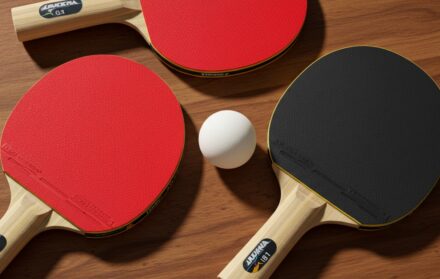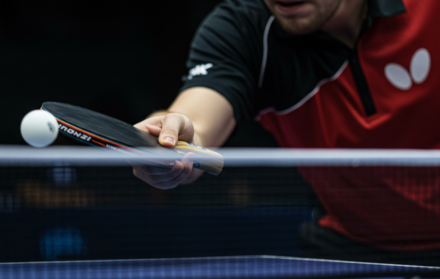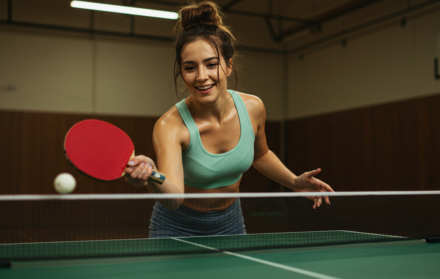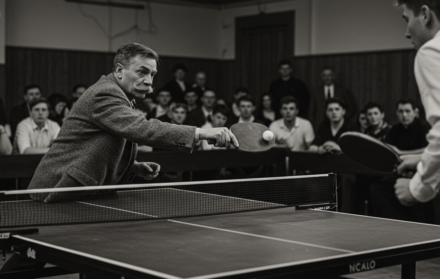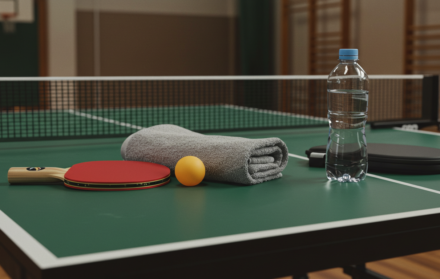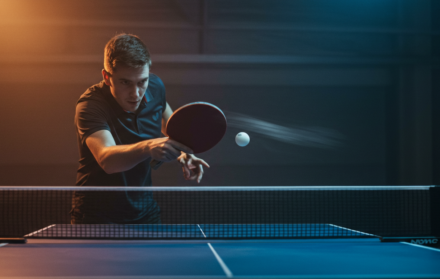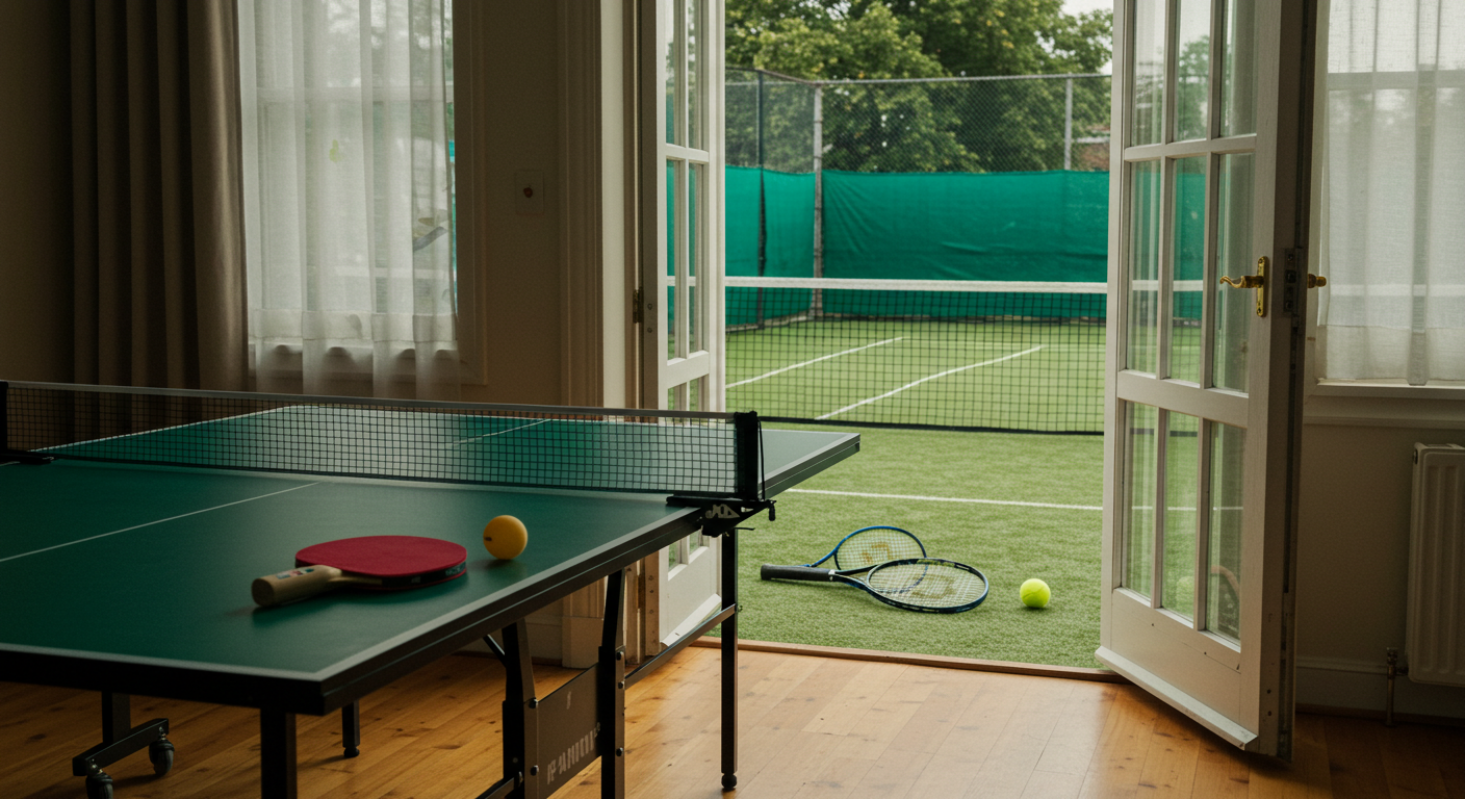
What’s the difference between table tennis and tennis?
Table tennis and tennis may share a name and some surface-level similarities, but they are two very different sports in terms of rules, equipment, pace, and style of play. While both involve rackets, balls, and a net, the scale, techniques, and competitive environments differ dramatically.
In this in-depth guide, we explore the key difference between table tennis and tennis, comparing everything from court size and scoring systems to playing techniques and physical demands. Whether you are a casual fan, a new player, or simply curious, understanding how table tennis and tennis differ can help you appreciate the unique skills each game offers.
Playing Environment and Court Size
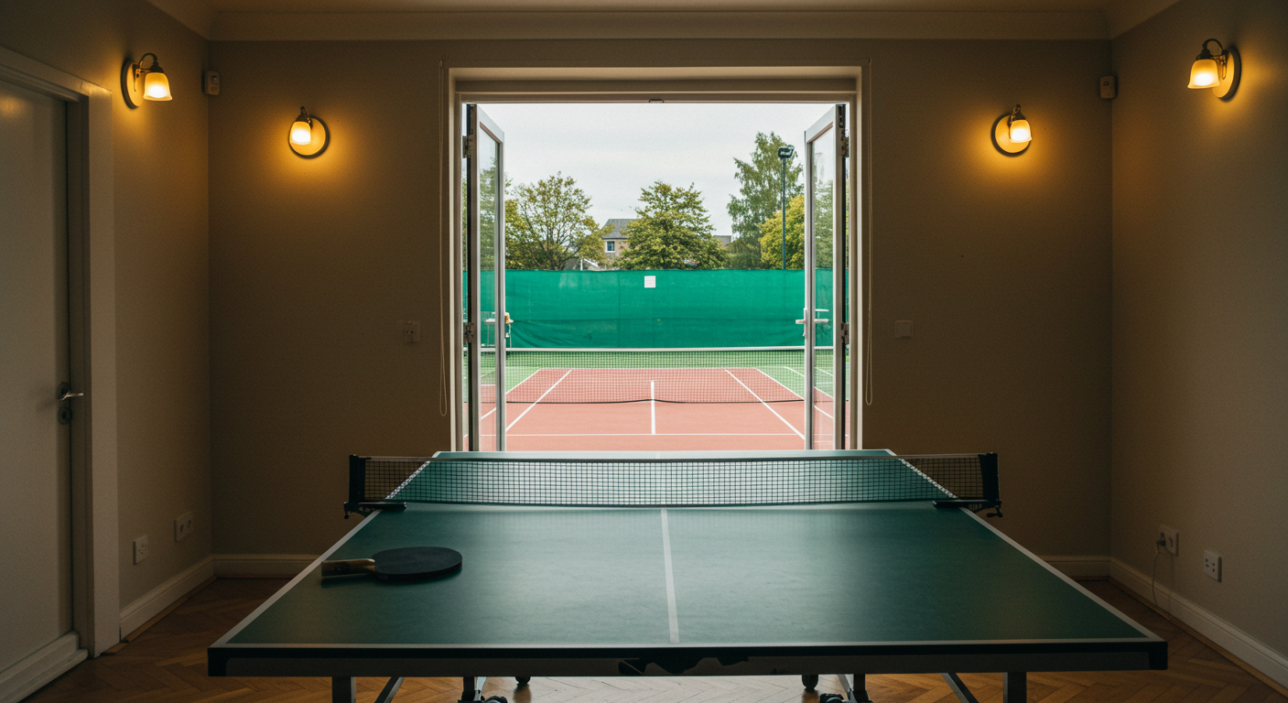
The most obvious difference between the two sports lies in their playing surfaces and dimensions.
Table Tennis
Table tennis, often played indoors, is a compact sport. It is typically played on a table measuring:
-
Length: 2.74 meters
-
Width: 1.525 meters
-
Height: 76 centimeters
The game is played in close quarters, and because the table is small, players rely on fast reflexes and short-distance footwork. The ball travels quickly and rallies are intense, often lasting only a few seconds at the highest levels.
Tennis
Tennis is played on a full-sized court, either indoors or outdoors. The dimensions for a singles match are:
-
Length: 23.77 meters
-
Width: 8.23 meters
For doubles, the width extends to 10.97 meters. Courts can be made from various surfaces such as clay, grass, or hard court, each affecting how the ball bounces and how players move.
The large size means players cover more ground, and movement includes running, sprinting, and lateral shuffles. Stamina and positioning play a major role, especially in long rallies or matches lasting several hours.
Equipment Differences
Though both sports use rackets and balls, the design and function of this equipment are completely different.
Rackets
-
Table Tennis: Uses a small paddle made of wood and rubber. It has no strings. Players can customize the rubber to create different levels of spin and speed. The paddle is typically about 15 centimeters long and is lightweight for fast wrist movements.
-
Tennis: Uses a larger racket made of composite materials like graphite or carbon fiber. It has a stringed face, which helps generate power and topspin. Tennis rackets are roughly 68 centimeters in length and require both hands for proper control in many shots.
Balls
-
Table Tennis: The ball is made of lightweight plastic, measures 40 mm in diameter, and weighs about 2.7 grams. It travels fast but with less force, due to its small mass.
-
Tennis: A standard tennis ball is made of rubber and covered with felt. It is pressurized and much heavier, weighing around 57 grams. Tennis balls bounce higher and can be hit over long distances with considerable force.
Net and Surface
-
Table Tennis: The net is 15.25 centimeters high and stretches across the width of the table. The ball must clear the net while staying on the short playing surface, making spin control crucial.
-
Tennis: The net is about 1.07 meters high at the posts and slightly lower at the center. Shots must pass over the net and land within larger boundaries, often at high velocity or with strategic placement.
Pace and Reflexes
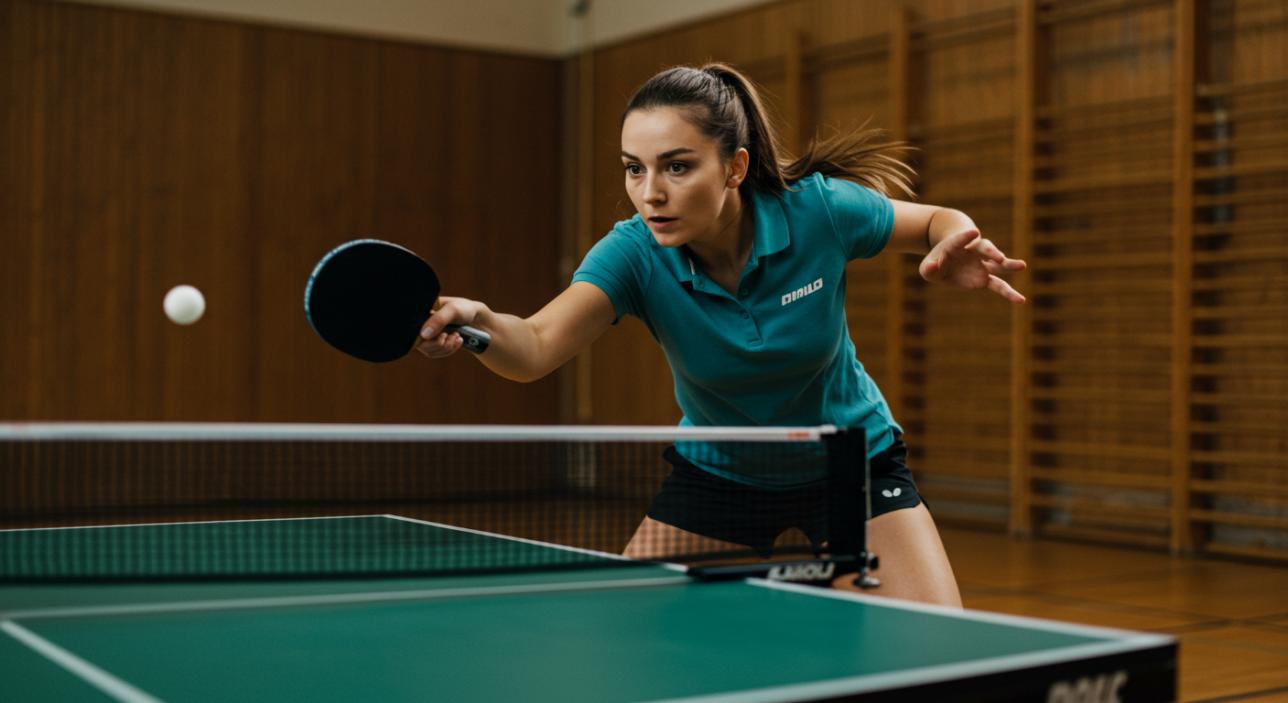
The nature of movement and reaction time varies significantly between the two sports.
Table Tennis
Table tennis is often described as the fastest racket sport in terms of reaction speed. Because the distance between players is so short, reaction times are measured in fractions of a second. Players need lightning-quick reflexes to return serves, especially at the professional level where balls can travel at speeds over 100 km/h.
The short rally lengths and high spin levels make anticipation and quick hand-eye coordination more important than sustained movement. A single stroke can end a point in under two seconds.
Tennis
In tennis, while the ball also moves fast, players have more time to react due to the larger court. The pace builds more slowly and rallies often involve multiple strokes and positioning exchanges. Reflexes are still vital, particularly at the net, but strategy and endurance play a more prominent role.
Players need strong legs, core strength, and the ability to run and recover for long periods. Shot placement and depth control are just as important as speed.
Scoring System
Another major difference lies in how matches are scored.
Table Tennis Scoring
-
Games are played to 11 points.
-
Players must win by at least 2 points.
-
Matches are usually best of 5 or best of 7 games.
-
Each player serves for 2 points before alternating.
Scoring is simple and fast, which means matches can be quick but also intense. Because of the shorter format, players must maintain focus throughout, as momentum can shift quickly.
Tennis Scoring
-
Matches are divided into sets.
-
A player must win 6 games to win a set (with a 2-game margin).
-
Games are scored in increments: 15, 30, 40, and game.
-
A match may be best of 3 or best of 5 sets depending on the level of play.
Tennis matches can last from under an hour to several hours, depending on how evenly matched the players are. The scoring system allows for comebacks and rewards endurance and consistency.
Summary Table: Core Differences

| Feature | Table Tennis | Tennis |
|---|---|---|
| Playing Area | 2.74m x 1.525m table | 23.77m x 8.23m court (singles) |
| Racket | Small wooden paddle | Large stringed racket |
| Ball | 40mm plastic ball | Pressurized felt-covered ball |
| Net Height | 15.25 cm | 1.07 m at posts |
| Pace | Very fast, reaction-based | Fast but more strategic |
| Scoring | Games to 11 points | Sets and games structure |
| Rally Length | Short, high-speed | Longer, varied in speed |
| Movement Type | Quick footwork, minimal space | Running, lateral movement |
| Surface | Indoor table | Clay, grass, or hard court |
Serving and Game Flow
Serving plays a critical role in both sports, but the mechanics and strategies behind it are vastly different.
Table Tennis
In table tennis, the serve must begin with the ball resting in an open palm and tossed at least 16 cm into the air before being struck. The ball must bounce once on the server’s side and then on the opponent’s side. Serves can be loaded with spin, making them unpredictable and difficult to return.
Each player serves two consecutive points before alternating. At 10-10, known as deuce, the serve alternates every point. Because the court is small, service variations often set up quick attacks or force immediate errors.
Tennis
In tennis, the serve is delivered from behind the baseline into a diagonal service box. Players use overhead motion and can generate speeds over 200 km/h in professional play. A strong serve is a powerful weapon that can earn free points through aces or forced errors.
Each player serves for an entire game. Faults are allowed once per point, with a second serve opportunity. A double fault results in loss of the point.
The tennis serve sets the tone of the rally and often dictates the pace of the game. Many top players are known for their dominant serving ability.
Playing Style and Strategy
The overall playing approach also differs dramatically between the two sports due to their physical setup and pace.
Table Tennis
Table tennis emphasizes quick bursts of movement, fine motor control, and spin variation. Players often stay close to the table, reacting to fast-paced rallies. Strategy revolves around topspin, backspin, placement, and deception. Footwork is tight and rapid, often involving small sidesteps rather than full sprints.
The game is also highly technical. A small angle change can drastically alter the ball’s spin and direction. Most rallies are won through a combination of spin manipulation and shot placement rather than raw power.
Tennis
Tennis strategy involves greater variety in shot types, court positioning, and physical endurance. Players use forehands, backhands, volleys, lobs, and drop shots, often building points gradually. Court coverage is essential, requiring players to recover after each shot and anticipate their opponent’s next move.
Tennis demands a blend of strength, speed, and stamina. Many points are won through controlled aggression or by outlasting the opponent in longer rallies.
Physical Demands

Both sports require fitness and skill, but the type of physical conditioning needed is quite different.
Table Tennis
-
Emphasizes explosive movement and fast reflexes
-
Lower cardiovascular demand due to short rallies
-
Requires excellent hand-eye coordination
-
Less strain on joints, making it accessible for all ages
-
Less physically taxing over long durations
Because players stay in a confined area, the sport focuses more on reaction speed and mental agility. It is common for players to practice for hours without excessive fatigue.
Tennis
-
High cardiovascular and muscular endurance needed
-
Full-body movement including sprints, stretches, and pivots
-
Greater risk of overuse injuries (shoulder, knee, elbow)
-
Longer matches require consistent hydration and energy management
-
Demands long-term physical conditioning
Tennis can be physically grueling, especially in professional formats. Players train year-round to maintain peak fitness, and nutrition becomes a critical part of preparation.
Global Popularity and Participation
Both sports are played around the world, but their popularity varies by region and demographic.
Table Tennis
Table tennis is widely played in Asia, especially China, where it is considered a national sport. It has strong roots in Europe and is growing steadily in North America and Africa. Because it requires minimal space and affordable equipment, it is played in schools, homes, offices, and recreational centers across the globe.
The sport is governed by the International Table Tennis Federation (ITTF), and it has been an Olympic event since 1988. China has dominated most international competitions, with players like Ma Long and Deng Yaping becoming household names.
Tennis
Tennis has a large global following, particularly in Europe, the United States, Australia, and South America. Grand Slam tournaments like Wimbledon, the US Open, and Roland Garros attract millions of viewers and offer large prize pools.
The sport is governed by the International Tennis Federation (ITF) and featured in the Olympics as early as 1896. Tennis also enjoys a robust professional tour with the ATP and WTA circuits.
While tennis requires larger courts and higher investment in equipment and coaching, it has a prestigious image and strong infrastructure worldwide.
Notable Players and Cultural Influence

Famous Table Tennis Players
-
Ma Long (China): Often called the greatest of all time, he has won multiple Olympic gold medals and World Championships.
-
Jan-Ove Waldner (Sweden): Known as the Mozart of table tennis, he achieved success against dominant Asian players and elevated the sport in Europe.
-
Deng Yaping (China): A legendary female player who won four Olympic golds and several World titles.
Famous Tennis Players
-
Roger Federer (Switzerland): Known for his elegance and consistency, he won 20 Grand Slam titles.
-
Serena Williams (USA): One of the most dominant female athletes in history with 23 Grand Slam titles.
-
Rafael Nadal (Spain) and Novak Djokovic (Serbia): Both have redefined endurance, power, and strategy in modern tennis.
These athletes have shaped the identity of their sports and brought them to mainstream audiences worldwide.
Final Thoughts: Difference Between Table Tennis and Tennis
While table tennis and tennis both involve rackets, balls, and a net, they differ in almost every other aspect. Table tennis is a game of reflexes, precision, and rapid pace. It is accessible, compact, and highly technical. Tennis, on the other hand, demands endurance, power, and court coverage. It is physically demanding, strategic, and globally followed at elite levels.
Each sport offers unique challenges and rewards. Whether you enjoy the rapid intensity of table tennis or the powerful rallies of tennis, both games provide excellent physical activity, mental engagement, and competitive thrill.
For players and fans alike, understanding these differences deepens your appreciation of both disciplines. And for those choosing which to pursue, it helps you find the sport that suits your goals, environment, and personal style.
Frequently Asked Questions
1. Is table tennis easier than tennis?
Table tennis is easier to start due to lower physical demands and cheaper equipment. However, mastering the spin and speed takes years of practice, just like tennis.
2. Which sport burns more calories?
Tennis typically burns more calories per hour due to its intense physical activity. Table tennis still provides a great workout, especially for coordination and reflexes.
3. Can tennis players switch to table tennis easily?
Some skills transfer, such as timing and hand-eye coordination. However, table tennis requires faster reflexes and very different stroke mechanics.
4. Are both sports included in the Olympics?
Yes. Tennis has been in the Olympics since 1896 (with some gaps). Table tennis has been included since 1988.
5. Which sport is better for seniors?
Table tennis is often better for older adults, as it is low-impact and easier on the joints. It helps with mental sharpness and physical coordination.
6. Is the equipment expensive?
Table tennis is more affordable to get started. A decent paddle, a few balls, and access to a table are all you need. Tennis rackets, court fees, and apparel tend to cost more.
7. Can both be played competitively?
Yes. Both sports have professional leagues, tournaments, and global rankings. Even at the amateur level, clubs and competitions are widely available.
